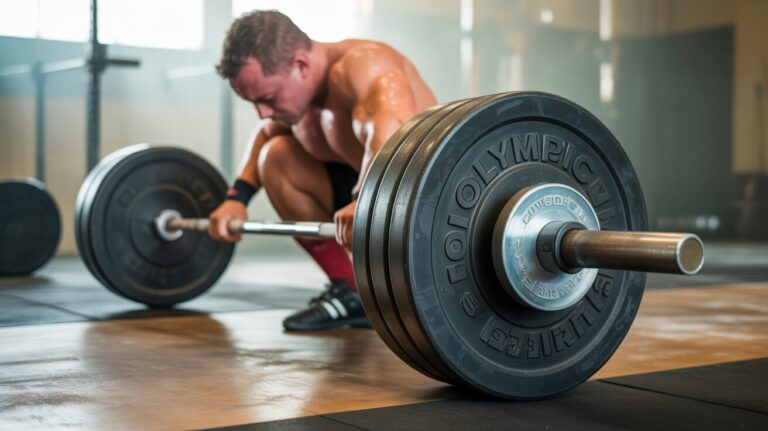Knowing your one-rep max (1RM) is like having a roadmap for your strength training journey. It’s the absolute most weight you can lift for a single repetition of an exercise. This number is the key to unlocking smarter programming, accurately tracking your progress, and pushing your limits effectively. But chasing that peak strength without the right precautions can be a fast track to injury. That’s why understanding how to test 1RM safely is not just important—it’s essential.
This guide will walk you through everything you need to know to find your maximal strength without compromising your well-being. We’ll cover the foundational checks, the step-by-step testing protocol, and smart alternatives for those who want the data without the risk of a true max-out day.
What Is a One-Rep Max (1RM) and Why Test It?
Your one-rep max is a direct measure of your maximal strength on a specific lift, typically the squat, bench press, deadlift, or overhead press. It’s a benchmark—a snapshot of your current capabilities.
But why is this number so valuable?
- Smarter Training: Most effective strength programs are based on percentages of your 1RM. Knowing this figure allows you to train at the right intensity for your goals, whether that’s building muscle (hypertrophy), increasing power, or pure strength.
- Measurable Progress: It provides a concrete way to track your progress. Seeing your 1RM increase over time is incredibly motivating and confirms your training is working.
- Breaking Plateaus: Understanding your strength ceiling can help you and your coach make informed decisions to break through training plateaus.
Before You Even Think About Testing: Are You Ready?
Attempting a 1RM is not for beginners. It places immense stress on your muscles, tendons, and central nervous system. Before considering a test, ensure you meet these crucial prerequisites:
- Training Experience: You should have at least six months of consistent and structured lifting experience. Your body needs time to adapt to the stress of heavy weights.
- Mastery of Form: Your technique on the lift you’re testing must be impeccable, even under fatigue. If your form breaks down with submaximal weights, you are not ready for a 1RM attempt.
- Currently Injury-Free: Never attempt a 1RM if you are nursing an injury or feeling any joint pain. It’s a risk that simply isn’t worth taking.
The Golden Rules: How to Test 1RM Safely

If you’ve checked all the boxes and are ready to go, safety becomes the top priority. Following a structured protocol minimizes risk and ensures the number you get is a true reflection of your strength.
The Art of the Warm-Up: Preparing for a Maximal Lift
A proper warm-up does more than just get your blood flowing; it prepares your mind and body for the intense effort to come.
- General Warm-Up (5-10 minutes): Start with some light cardio, like rowing or cycling, to raise your core body temperature.
- Dynamic Stretching: Focus on movements that take the joints you’ll be using through their full range of motion. Think leg swings, arm circles, and hip mobility drills.
- Activation Drills: Perform exercises that “wake up” the key stabilizing muscles for your lift. For a squat, this could be glute bridges and bird-dogs. For a bench press, band pull-aparts are excellent.
- Ramp-Up Sets: This is the most critical part of the warm-up. You will gradually increase the weight on the bar to acclimate your nervous system. A typical ramp-up might look like this:
- Set 1: Barbell only for 10 reps
- Set 2: 50% of your estimated 1RM for 5 reps
- Set 3: 65% of estimated 1RM for 3 reps
- Set 4: 75% of estimated 1RM for 2 reps
- Set 5: 85-90% of estimated 1RM for 1 rep
Take 2-4 minutes of rest between these ramp-up sets to ensure you are fresh for the attempts that count.
The Role of the Spotter: Your Most Important Teammate
For lifts like the squat and bench press, a competent spotter is non-negotiable. A good spotter does more than just save you from a failed lift; they provide the confidence you need to push maximally.
Before you lift, communicate clearly with your spotter. Discuss how you want assistance, if you want a “lift-off” on the bench press, and what their role will be. They should be strong enough to handle the weight and know when to intervene—only when the bar stops moving or your form severely breaks down.
The Step-by-Step 1RM Testing Protocol
After your final warm-up single, rest for 3-5 minutes. Now it’s time for your max attempts.
- First Attempt (~90-95% of estimated 1RM): Choose a weight you are very confident you can lift for a single. This should feel heavy but move well.
- Rest: Take a full 3-5 minutes of rest. Sit down, visualize the next lift, and stay focused.
- Second Attempt (~100-105% of your last attempt): Make a small jump in weight (2.5-5% increase). This will likely be at or near your previous personal record.
- Assess and Repeat: If you successfully completed the second attempt with good form, you can consider a third attempt. Only increase the weight slightly. Your goal should be to find your max within 3-5 working attempts. Any more than that, and fatigue will become the limiting factor.
Listening to Your Body: When to Stop
Ego can be the enemy of a safe 1RM test. Stop the test immediately if you feel any sharp pain or if your technique degrades significantly. A “grindy” but safe rep is one thing; a complete breakdown in form is a recipe for disaster.
What if I train alone? Safe Alternatives to a True 1RM Test
Many people train alone or may not feel comfortable going for a true 1RM. The good news is you can get an accurate estimate of your strength without the risk.
Using Repetition Maximums (e.g., 3RM or 5RM)
Testing your 3-rep max or 5-rep max is significantly safer and less taxing on the nervous system. Once you find the maximum weight you can lift for 3 to 5 clean reps, you can use that number to estimate your 1RM.
The Power of RPE (Rate of Perceived Exertion)
RPE is a scale from 1-10 that measures how hard a set feels. A 10 RPE means you could not have done another rep. A 9 RPE means you had one rep left in the tank. Hitting a single rep at a 9 RPE is a great way to gauge your strength gains without pushing to absolute failure.
Using a 1 Rep Max Calculator for Accurate Estimates
The easiest and safest method is to use an online tool. A well-designed one rep max calculator uses established formulas to predict your 1RM based on a submaximal effort.
For example, you can perform a set of as many reps as possible with good form using a challenging weight (e.g., 80% of your estimated max). You then input the weight used and the number of reps completed into the calculator.
How often should you test your 1 rep max?
For most lifters, testing a true 1RM is not necessary more than once every 3-6 months. It’s a test, not a training method. Elite powerlifters may only perform a true 1RM on meet day. Over-testing can lead to burnout and interfere with your actual training progress.
What is a good 1 rep max?
This is a common question with a complex answer. A “good” 1RM is entirely relative to your age, gender, body weight, and training experience. Instead of comparing yourself to others, focus on your own progress. A good 1RM is one that is better than your last one. For more detailed standards, you can look up strength standards from reputable organizations like the National Strength and Conditioning Association (NSCA).
Find Your True Potential, Safely
Knowing your one-rep max is a powerful tool. It provides clarity, direction, and motivation for your training. By prioritizing readiness, employing a meticulous warm-up, and using a spotter, you can discover your peak strength safely.
If a true 1RM test isn’t right for you, using smarter alternatives like a 3-5RM test or an estimator is a fantastic way to get the data you need to keep making progress.
Ready to find your 1RM without the risk?
Stop guessing and start calculating. Use our precise and easy-to-use tool to get an accurate estimate of your one-rep max today. It’s the smartest way to structure your training for real results.
➡️ Try Our Free One Rep Max Calculator Now!






